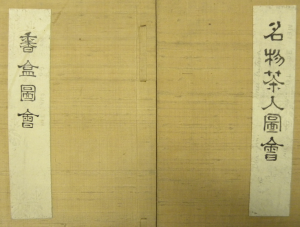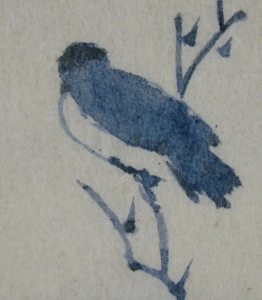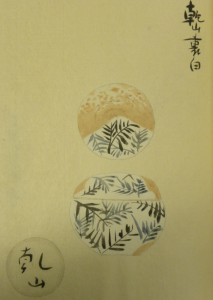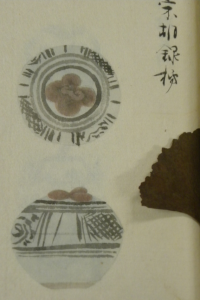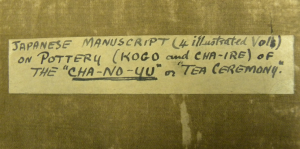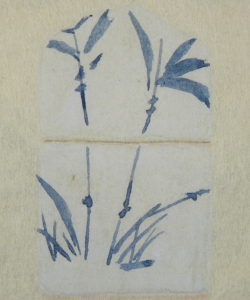RECENT ACQUISITION OF 19th CENTURY ILLUSTRATED JAPANESE CALLIGRAPHIC MANUSCRIPT
![]() Recently arrived in to the holdings of the Centre for Research Collections (CRC) is this profusely illustrated manuscript devoted to the ceramic vessels used in the chanoyu or Japanese Tea Ceremony.
Recently arrived in to the holdings of the Centre for Research Collections (CRC) is this profusely illustrated manuscript devoted to the ceramic vessels used in the chanoyu or Japanese Tea Ceremony.
The tea ceremony, also called the ‘way of tea’ is a Japanese cultural activity involving the ceremonial preparation and presentation of powdered green tea (matcha). Zen Buddhisim was a primary influence in the development of the ceremony and the art and manner in which it is performed.
Tea gatherings are classified as: an informal tea gathering or chakai, offering a relatively simple course of hospitality that includes confections, thin tea, and perhaps a light meal; and a formal tea event chaji, usually including a full-course meal followed by confections, thick tea, and thin tea. A chaji can last several hours.
Some of the utensils used in the ceremony were: kogo – small ceramic or wooden containers used to hold pieces of incense, with their use varying with the seasons (wooden ones holding the chips of incense wood for summer ceremonies, ceramic ones holding kneaded incense in winter ceremonies); and, cha ire – tea container.
The four volumes comprising the illustrated ms on paper – and dated at circa 1850-1865 – are entitled: Ko Bon Zu-e Ko, and Meibutsu Chajin Zu-e. These are volumes containing c. 188 watercolour illustrative diagrams of regional or speciality utensils – ceramic vessels or tea caddies – for students of the tea ceremony, chajin, and illustrations of incense trays and boxes.
The volumes are gathered in a cover which holds the label: Japanese manuscript (4 illustrated Vols) on Pottery (Kogo and Cha-Ire) of the Cha-No-Yu or Tea Ceremony.
The text and images of three volumes are on both sides of concertina-bound paper. The volumes are stitched in silk covered wrappers with ms labels to the upper covers.
Dr. Graeme D. Eddie, Assistant Librarian Archives & Manuscripts, Centre for Research Collections
Note: this blog-post was constructed using the sales literature, information on the item, and a number of relevant websites.
